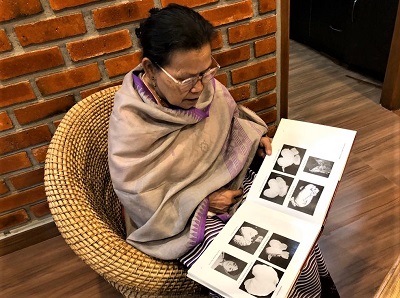Imphal, (Asian independent) Shattered by ethnic enmity between non-tribal Meitei and tribal Kukis and devastated violence for over four months, joy and pride erupted among the people of troubled Manipur as the state’s ‘Kokyet’ or turban has been chosen as part of the dress code for the Marshals of the Indian Parliament.
The Central government has decided to introduce new uniforms for the employees of both Houses of the Parliament — Lok Sabha and Rajya Sabha for the upcoming five-day special parliamentary session scheduled to begin on Monday.
Marshals of both the Houses will also be seen wearing Manipuri ‘Kokyet’ or turbans.
Besides Kokyet, other new uniform items being introduced include Nehru jackets of magenta or deep pink shade for secretariat staff, camouflage for security officers, officials said.
Renowned cultural exponent and former Director of Manipur’s Art and Culture department, K. Sobita Devi, while expressing her happiness over the new development, said the Union government has recognised the rich culture of the state.
“It is very interesting and hopeful that it will highlight the culture of Manipur to the rest of the world. But the problem is that we just want to know what kind of turban has been chosen for the purpose,” she said.
According to Sobita Devi, who has authored a book entitled, ‘The Traditional Dress of the Meiteis’ said there are 12 different varieties of Meitei Kokyets and the same are used by different strata of the society in different occasions from commoners to that of the Royals.
“Kokyet is the symbol of divine protective symbol from time immemorial because it has been derived from the two horns of the Lord Pakhangba who has many facets from the Atiya Guru Sidaba. So, these two horns symbolise the whole of Atiya Guru Sidaba as the protective symbol of the Meitei culture.”
The history of Kokyet dates back since the reign of Meitei mythical God-king Nongda Lairen Pakhangba in 33 A.D. as he used ‘Kokyet Pheiyet’ (one of the varieties), and in later times, princes used it occasionally.
She said that the use of turbans differed significantly in style and according to the purpose of use and occasion.
Yumnam Bhubaneshor Singh, a Manipuri cultural artist, supervised the new design of the Kokyet to be spotted by the Marshals.
According to Singh, the newly-designed turban has brand new colour patterns and design inspired by the Salai Taret Kokyet with Lamthang Khuthak.
Sharing his joy, celebrity theatre director Kshetri Jugindro said it is a matter of pride and honour for the state of Manipur.
Jugundro, who is also the former secretary of Manipur State Kala Akademi, admitted that there are certain varieties of Kokyets which are meant for specific occasions and echelons of the society.
He hoped that the ones which are to be donned by the Parliament Marshals do not breach the cultural ethos of the state.
Manipur State Film Development Society (MSFDS) Secretary Sunzu Bachaspatimayum has a different version, but hailed the government for the move.
“I must say I’ve mixed emotions on the decision of the government. While I’m thrilled to know that our cultural heritage is being recognised and duly found a space in the Indian Parliament, I’m also skeptical as Meitei fabric heritage is steeped in hierarchy and symbolism that must be observed,” Bachaspatimayum told IANS.








